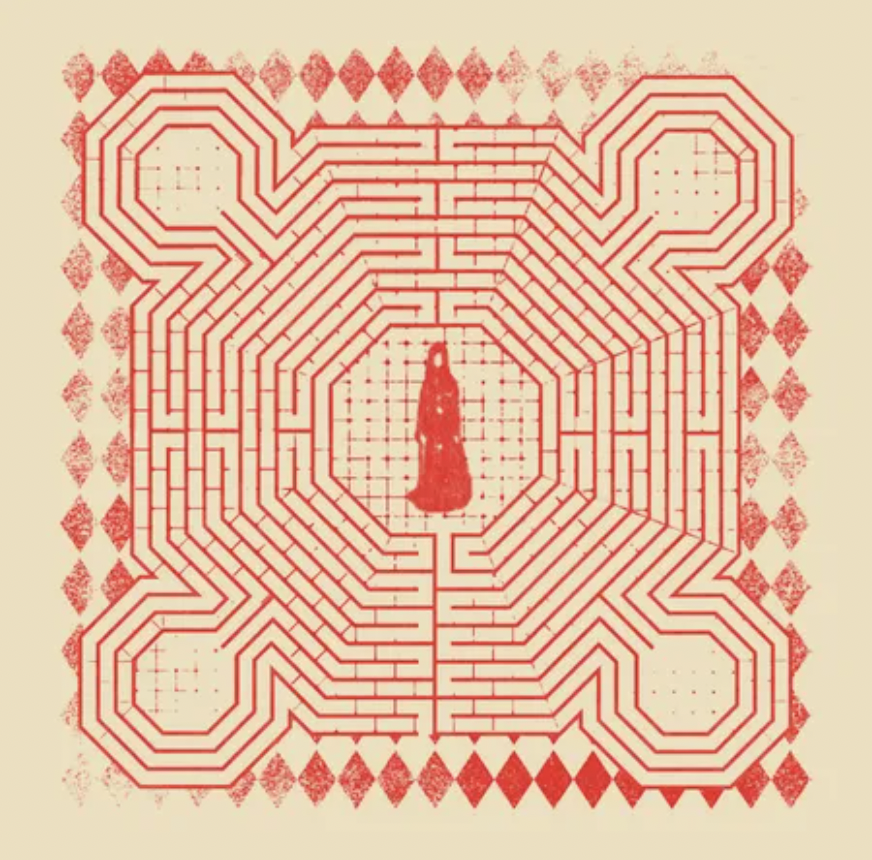everything is alive and the future of shoegaze
By Aidan Monks
This is a new Slowdive. Since taking to the stage at the Primavera Sound festival in 2014, followed by a well-received comeback album in 2017, something has changed. The teenage angst and longing for an eternal youth as it passes slowly, peeling and dissolving, is gone now; the twenty-somethings who gave us Just for a Day in 1990 and Souvlaki in 1993 are now facing fifty, and the weight of time has fallen between them. Where the comeback album (Slowdive) was an authentic, and welcome, reproduction of their original sound, 2023’s everything is alive is fully prepared to take listeners somewhere new. After all, six years have passed since Sugar for the Pill resurrected the sound of shoegaze (or dream pop/noise pop) on international radios with its characteristic guitar distortion, tremolo, echo, reverb, and obscured, ethereal vocal work. The band has faced loss (the deaths of Rachel Goswell’s mother and Simon Scott’s father), addiction, and the pandemic. everything is alive is a radical left-turn for Slowdive, the only active artists from the original wave of dream pop, and should be considered with regards to these personal crises.
The first thing we hear on everything is alive is neither a guitar or Goswell or Neil Halstead’s vocals. Opening track ‘shanty’ kicks the record off with whirling, earthy analog synths, which soon become absorbed in a panorama of pulsating distortion and sharp guitar expressions. ‘prayer remembered’ follows with an ambient/electronic instrumental (something we might have heard on Slowdive’s 1995 electronic turn Pygmalion,) Channelling a post-rock influence as well as the work of Brian Eno, who heavily informed and produced two songs on Souvlaki. It is worth mentioning that the overall sound of the album evolved from some solo recordings Halstead was developing during lockdown with modular synthesisers: everything is alive was originally conceived as a low-key techno album before swiftly returning to all-band territory.
True, the album features some characteristically dream pop textures, especially on the track ‘skin in the game’ which comes in around the album’s halfway point; in the wistful spirit of 2017’s Slowdive, its sound is that of a quintessentially shoegaze cut. But, the modus operandi of shoegaze has, for the most part, been subordinated to various changes in stylistic trajectory. Take the album’s lead single ‘kisses’ - with a music video by Noel Paul - which offers listeners a stripped-back sound, Halstead and Goswell’s vocals exposed, lyrics discernable, even a catchy chorus line. In a similar way, Halstead’s sombre lyrics and heavy, sullen tone are displayed naked of any distortion in the song ‘andalucia plays’, which takes a surprising acoustic route before ‘kisses’ sweeps us into a ballad of young love and diminished freedom - familiar territory for Slowdive, but, you may detect, something has changed. Intimacy has metamorphosed into distance, and adolescent nostalgia into a sense of middle-age longing and vulnerability. Coming to terms with grief and addiction obliges vulnerability and self-reflection: the band’s embracement of minimalism and attenuating their trademark vocal opacity are noteworthy shifts in the direction of growth, something essential for progression.
The critical and commercial success of 2017’s Slowdive - the first of the band’s career - coupled with the reappraisal of shoegaze since Slowdive and the valentines’ respective reunions (2013-14) has empowered them with the creative freedom to explore their sound, or more specifically to subject their style to the rule of their present feelings and mental states. The new album is not fan service in the same way as the comeback was. If Slowdive carries the same longevity as Souvlaki, then everything is alive accomplishes what Pygmalion prematurely strove for: a new chapter of shoegaze. Personal tragedy and the self-consciousness of middle-age has orchestrated a similar stylistic progression which, rather than destroy the band’s reputation, has cemented their comeback and bona fide significance in alternative music. As the only active band of the original dream pop movement, Slowdive continues to evidence the relevance of the genre (if the existence of post-shoegazers like Beach House and Candy Claws was not enough) while simultaneously innovating and causing its timely evolution, which is ultimately the only way a genre can survive.
In everything is alive, Slowdive have progressed from pastiche of themselves into innovators of a genre they helped to create, fulfilling Halstead’s project in Pygmalion to synthesise the token features of shoegaze with other genres from ambient to techno to prog. The band writes in ‘alife’, “We look, but we don’t understand.” Slowdive has reached the point of reflection (on age, meaning, music, etc.) where indeed everything is alive, but they do not know for how long, or what to make of the time they have. But, everything is alive ascends from sunken meditations on loss to joy for the time the band has shared - over three decades at this point - and the experiences to come, threading styles and sounds together, and dissecting their own legacy in the process. What the album lacks for orthodox shoegaze listeners, it makes up for in maturity and circumstance. This is a band who has grown too much to thrive on the dregs of former glories and the ingenuity of 1990s sleeper hits. This is a shoegaze band in motion, a very endangered species, one for whom music is not timeless but concentrated in time, about time gone by and on the horizon, capable of reincarnation with the times as they change. For now, Slowdive are very much alive.

